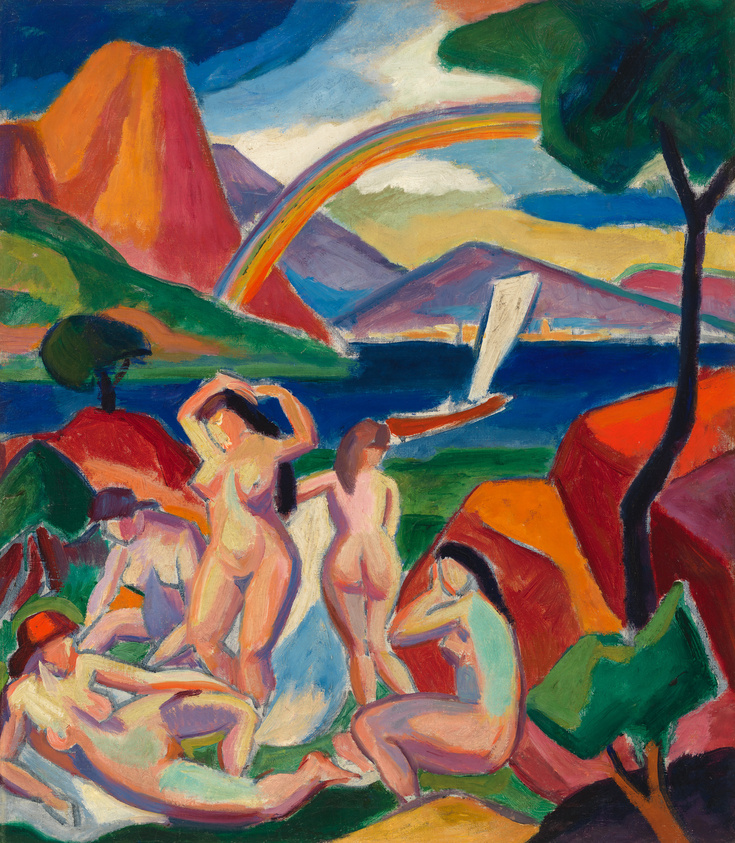At the Dawn of a New Age: Early Twentieth-Century American Modernism | Art & Artists
May 7, 2022–Feb 26, 2023
At the Dawn of a New Age: Early Twentieth-Century American Modernism | Art & Artists
Carl Newman
11
Born 1858 in Philadelphia, PA
Died 1932 in Abington, PA
Carl Newman was a fifty-two-year-old Pennsylvania Academy–trained figure painter when he spent the summer of 1910 in Paris with his close friend Henry Lyman Sayen, a fellow Philadelphia artist who had adopted Fauvism during his seven years living in France. Working alongside Sayen over the summer, Newman loosened his brushwork and brightened his palette. After Sayen returned to Philadelphia in 1914, the two artists began spending almost every weekend together at Newman’s large house and studio in the suburbs. In 1915, Newman commissioned Sayen to decorate the studio’s eighteen-foot-high ceiling. Painting beneath Sayen’s Fauvist kaleidoscope, Newman inaugurated a series of brightly colored Arcadian landscapes that recall Henri Matisse’s 1905 Joy of Life (which he would have seen in Paris in 1910 while attending Gertrude Stein’s salon). As his work evolved during the next decade, it came to be dominated by large-scale nude female figures. Unabashedly fleshy and voluptuous, they shocked American audiences to such an extent that one was once removed from an exhibition because of complaints. In a misguided effort to salvage her husband’s reputation, Newman’s wife destroyed many of these later figure paintings after his death.
Untitled (Bathers), c. 1917
Artists
- Richmond Barthé
- Ben Benn
- Albert Bloch
- Oscar Bluemner
- Patrick Henry Bruce
- Charles Burchfield
- Arthur B. Carles
- John Covert
- E.E. Cummings
- Imogen Cunningham
- James Daugherty
- Arthur B. Davies
- Stuart Davis
- Manierre Dawson
- Charles Demuth
- Isami Doi
- Aaron Douglas
- Arthur Dove
- Charles Duncan
- Yun Gee
- Marsden Hartley
- Rebecca Salsbury James
- Loïs Mailou Jones
- Taizo Kato
- Gaston Lachaise
- Blanche Lazzell
- Stanton Macdonald-Wright
- Man Ray
- John Marin
- Elie Nadelman
- Louise Nevelson
- Carl Newman
- Isamu Noguchi
- Chiura Obata
- Georgia O'Keeffe
- Walter Pach
- Agnes Pelton
- Nancy Elizabeth Prophet
- Henry Lyman Sayen
- Charles G. Shaw
- Harry Shigeta
- Henrietta Shore
- Pamela Colman Smith
- Joseph Stella
- Florine Stettheimer
- John Storrs
- Henry Fitch Taylor
- Helen Torr
- Jay Van Everen
- Adele Watson
- Max Weber
- Edith Clifford Williams
- Marguerite Zorach
- William Zorach

